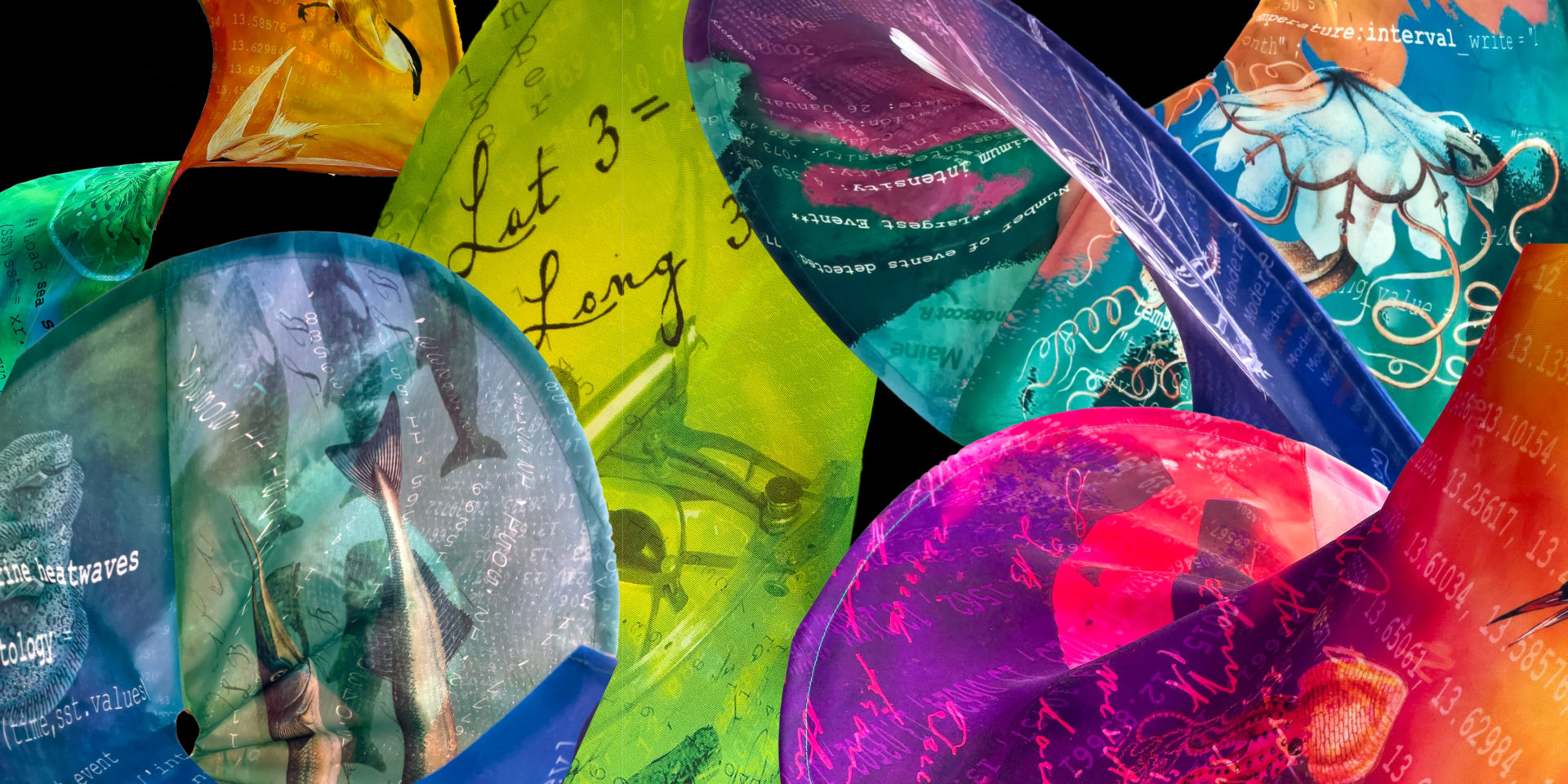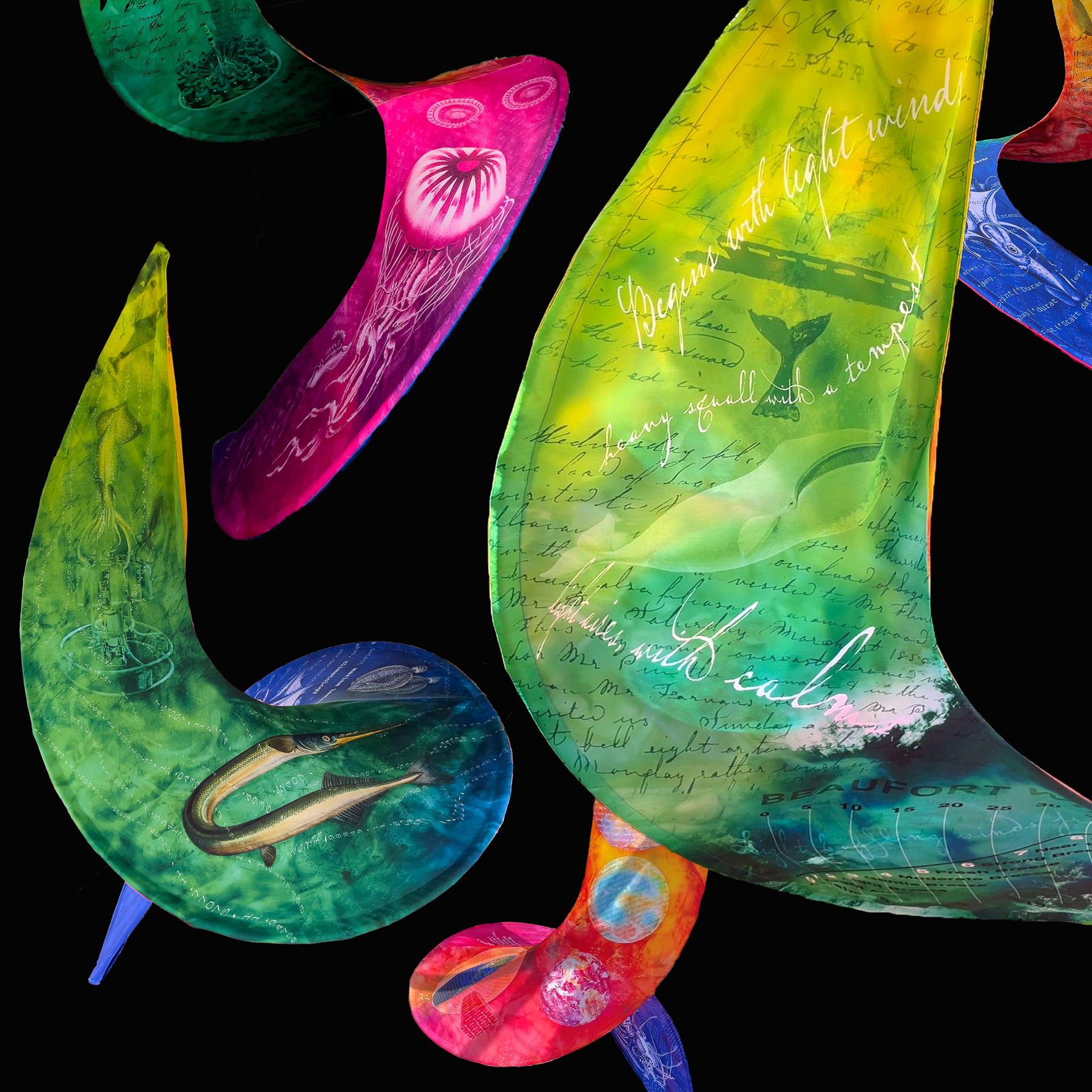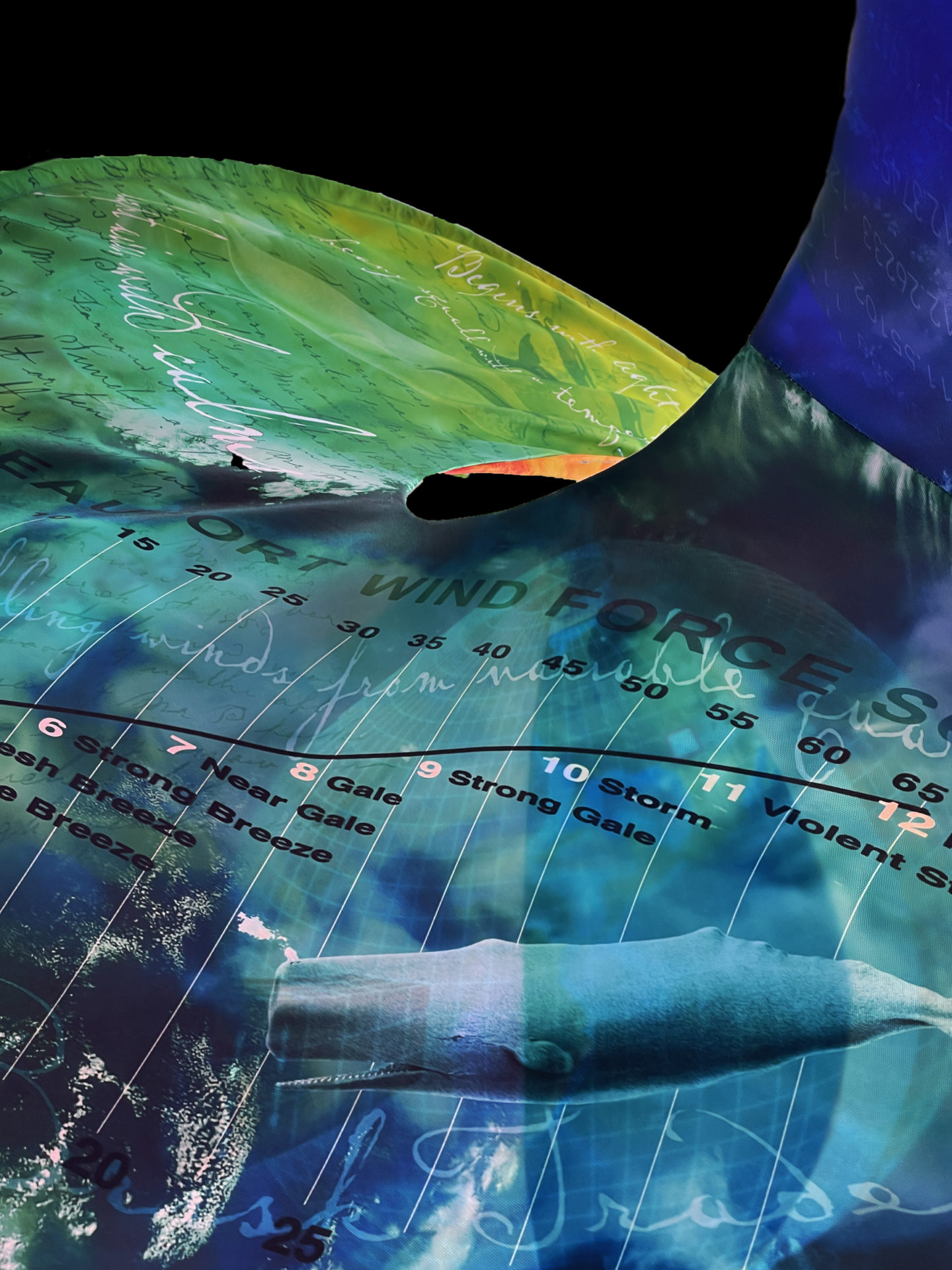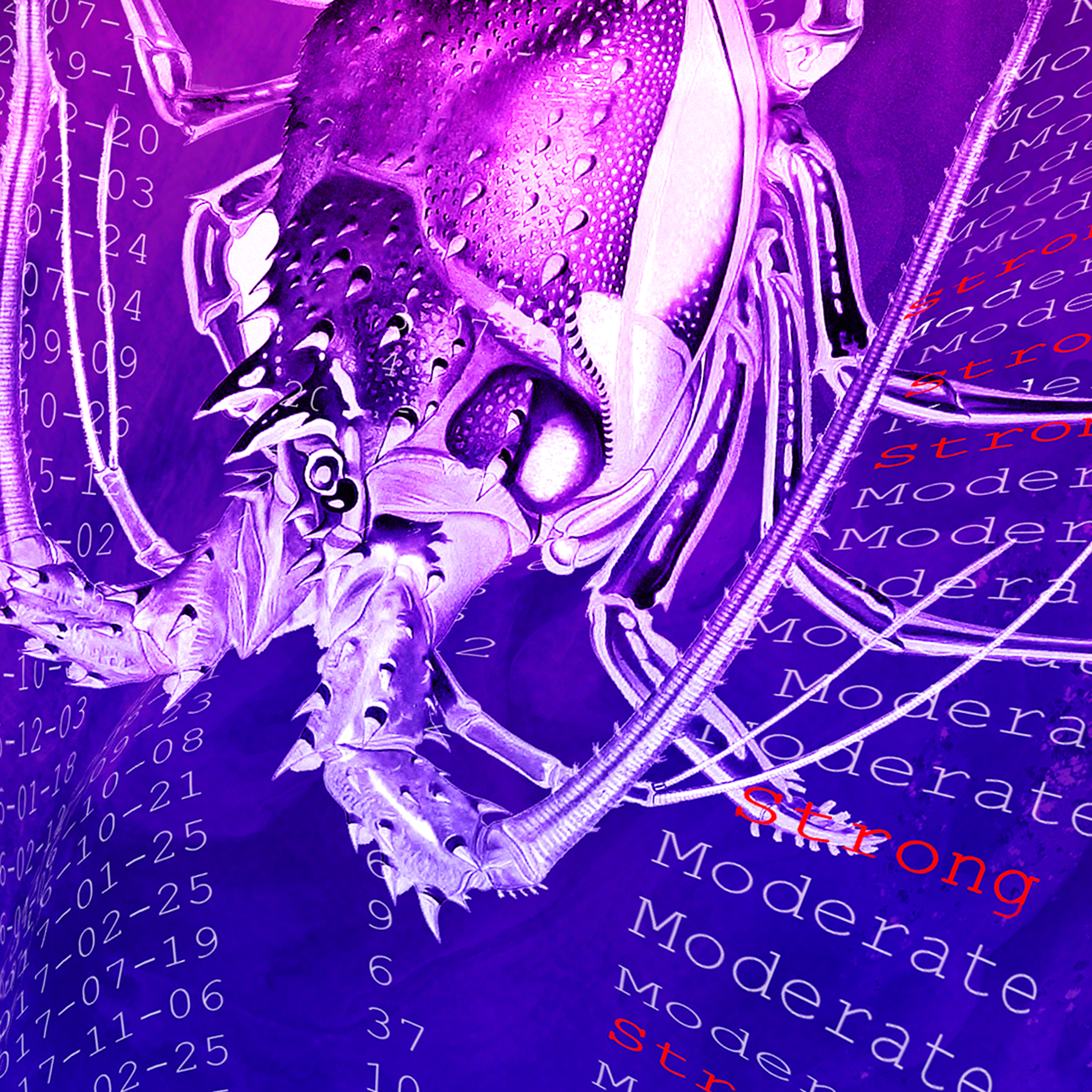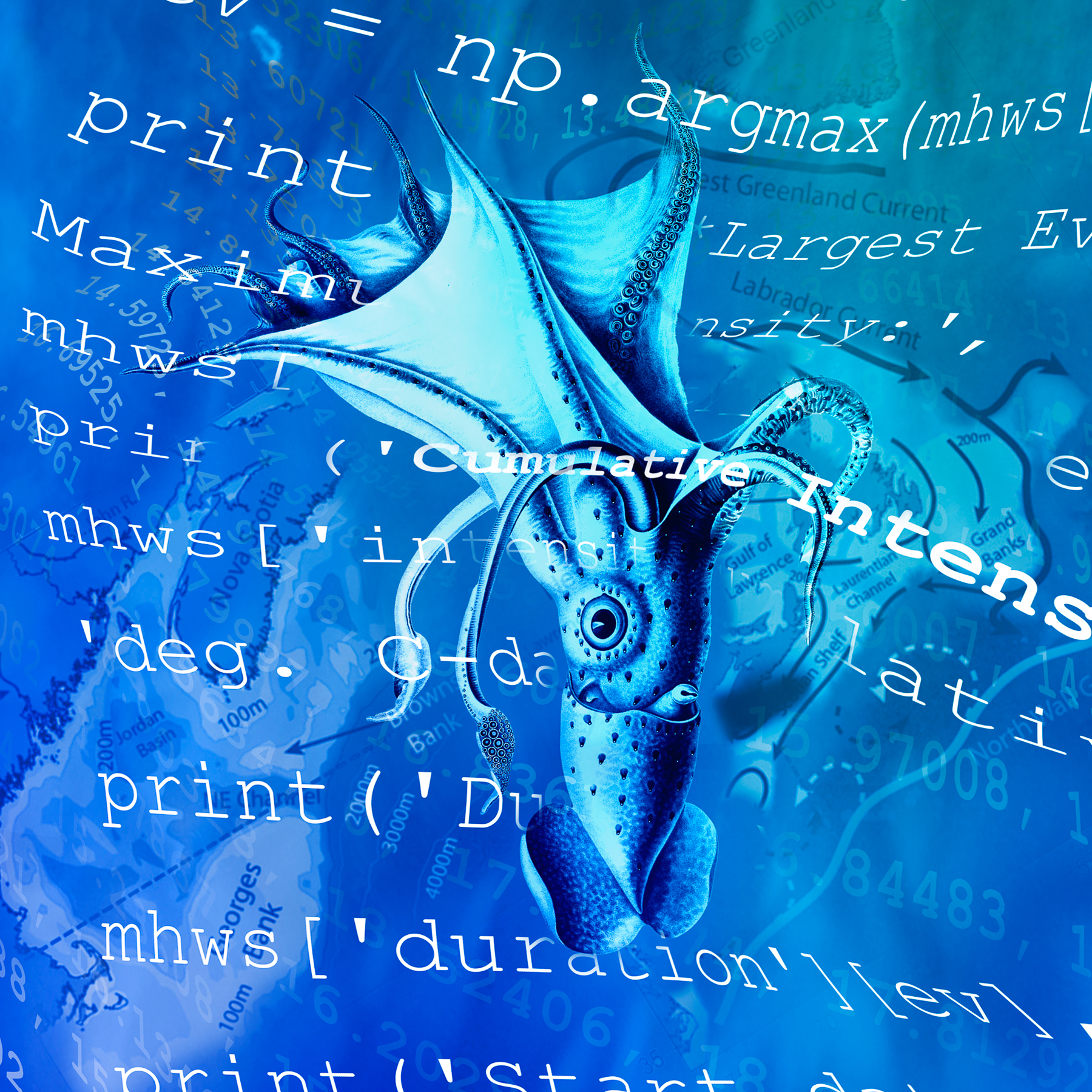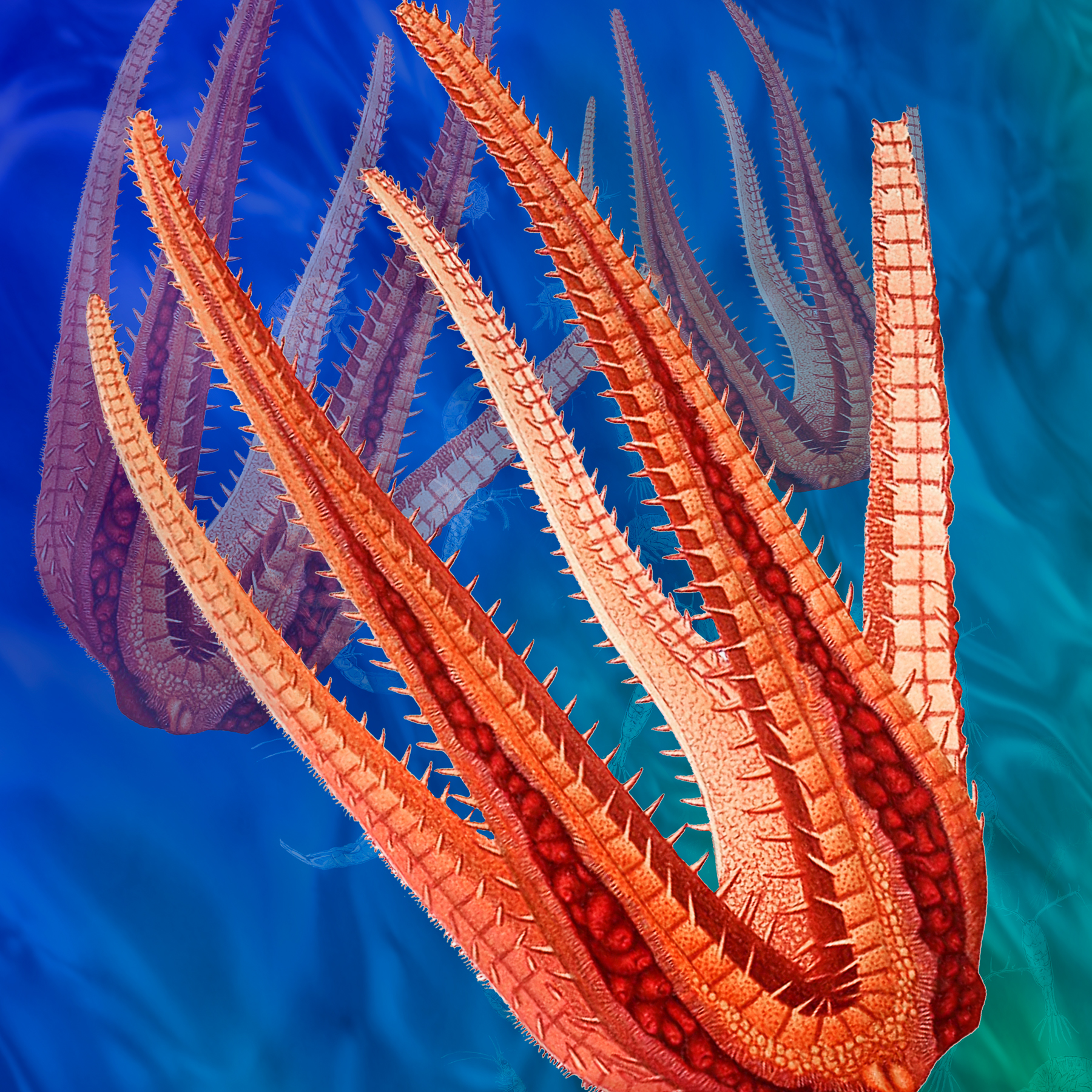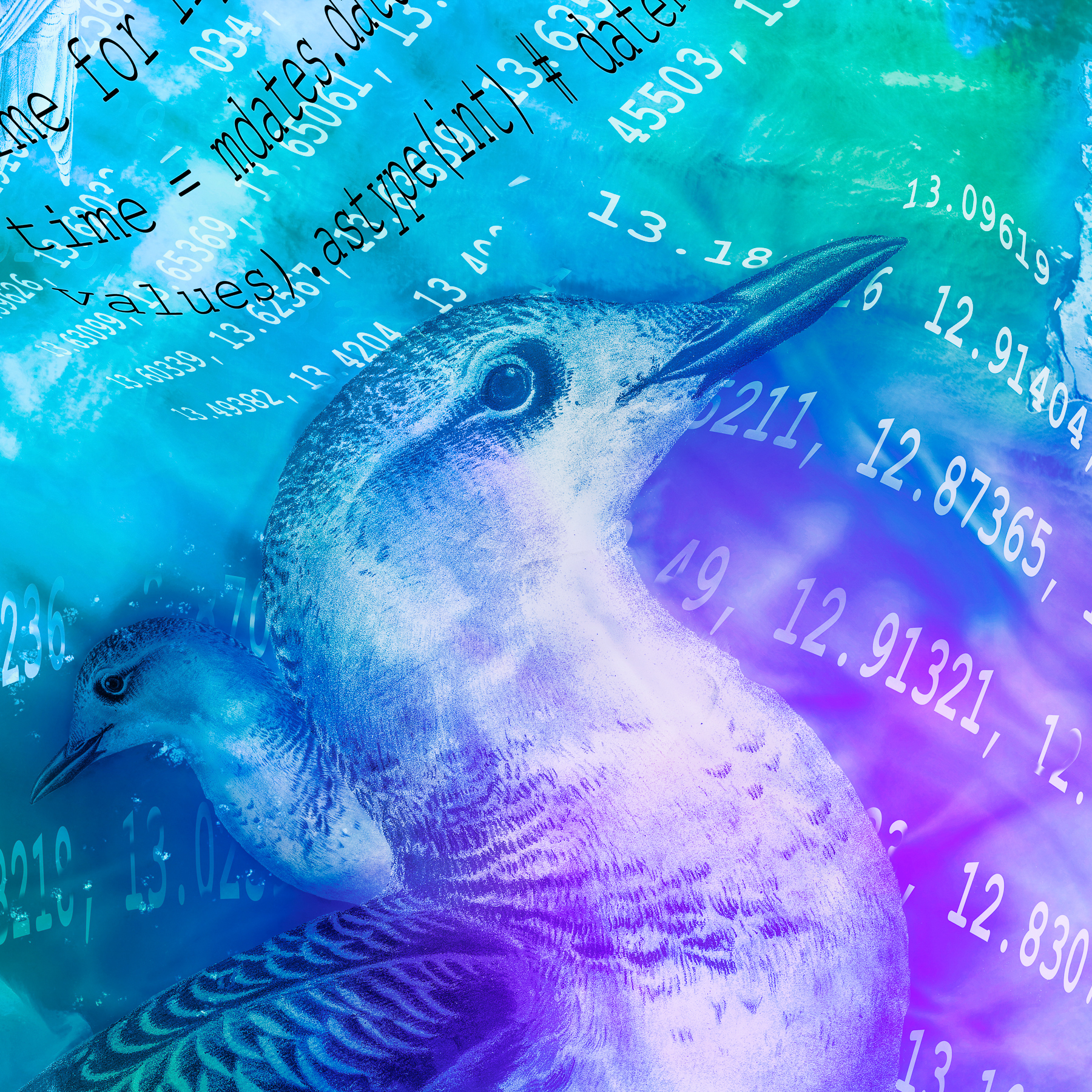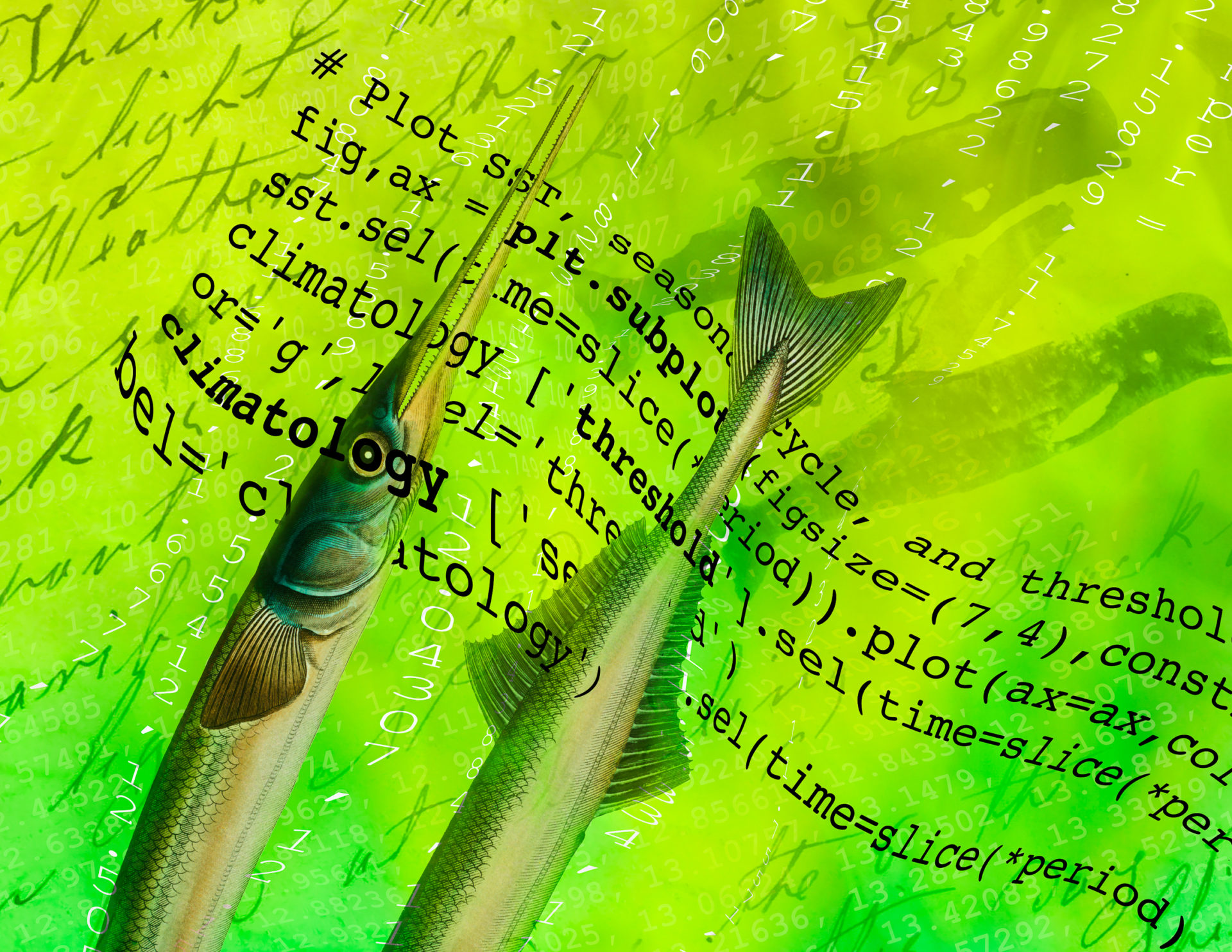Marine Heatwaves
New Bedford Whaling Museum
Jacobs Family Gallery
Opened: May 23, 2023
Closing: December 31, 2023
CAPTION: (above) Deb Ehrens, Marine Heatwaves, 2021. Materials and dimensions variable.
In the world of oceanography, marine heatwaves are a recently “discovered” phenomenon. As NOAA explains, “Marine heatwaves are periods of persistent anomalously warm ocean temperatures, which can have significant impacts on marine life as well as coastal communities and economies.” They are becoming more intense and more frequent.
Marine Heatwaves is an installation at the New Bedford Whaling Museum from May through December 2023. It was created by visual artist Deb Ehrens in collaboration with Caroline Ummenhofer and Svenja Ryan, oceanographers who specialize in climate change from the Woods Hole Oceanographic Institution.
The project aims to bridge art and science, areas that often appear as opposite disciplines, but are revealed to share a common language. The trio began the project with months of conversation about scientific and artistic processes and were surprised and delighted at the similarities. The three spoke in-depth about the challenges of creating visual representations of complex ideas and data. Ehrens asked Ummenhofer and Ryan: “What is the driving force that makes you dive into these massive data sets, travel to polar regions, and seek out new data from the past?” When they both replied, “the thrill of discovery!” Ehrens realized that these scientists are direct descendants of the naturalist explorers who used ink and pen for journal entries and illustrations. Using that as inspiration, Ehrens envisioned large moving forms that would capture the big systems and big data at the heart of climate research. To execute what she imagined, she merged kinetic sculpture and three-dimensional design on fabric to create “Heatwaves.”
Each “Heatwave” begins with a color gradient commonly used to convey oceanographic data. Next, Ehrens wove data generated by Ryan and Ummenhofer's computer models in and around 19th-century drawings of creatures impacted by marine heatwaves. She layered the computer code over whaling logbook entries of historical weather recordings used for comparison with current climate models. Then, Ehrens embedded graphs, charts, scientific instruments, and satellite photos of marine heatwaves to create depth and texture in the design. The heatwave imagery is intentionally both large and small scale because the trio want to intrigue viewers from a distance and invite them to come close and explore. This macro/micro viewing experience mirrors how both scientists and artists dive deep into rabbit holes on their way to seeing the big picture.
This project layers historical and contemporary scientific exploration, imagery, and data to invite visitors to explore and understand marine heatwaves and their environmental impact. Today, the tools are different, but the quest is the same.
As the kinetic sculptures spin, imagine the immense circulating air masses and ocean currents that drive our climate.
Come close. Look for the visual stories connecting today’s climate science to New Bedford’s past.
Explore the impact of marine heatwaves on our fisheries, marine ecosystems, and biodiversity.
